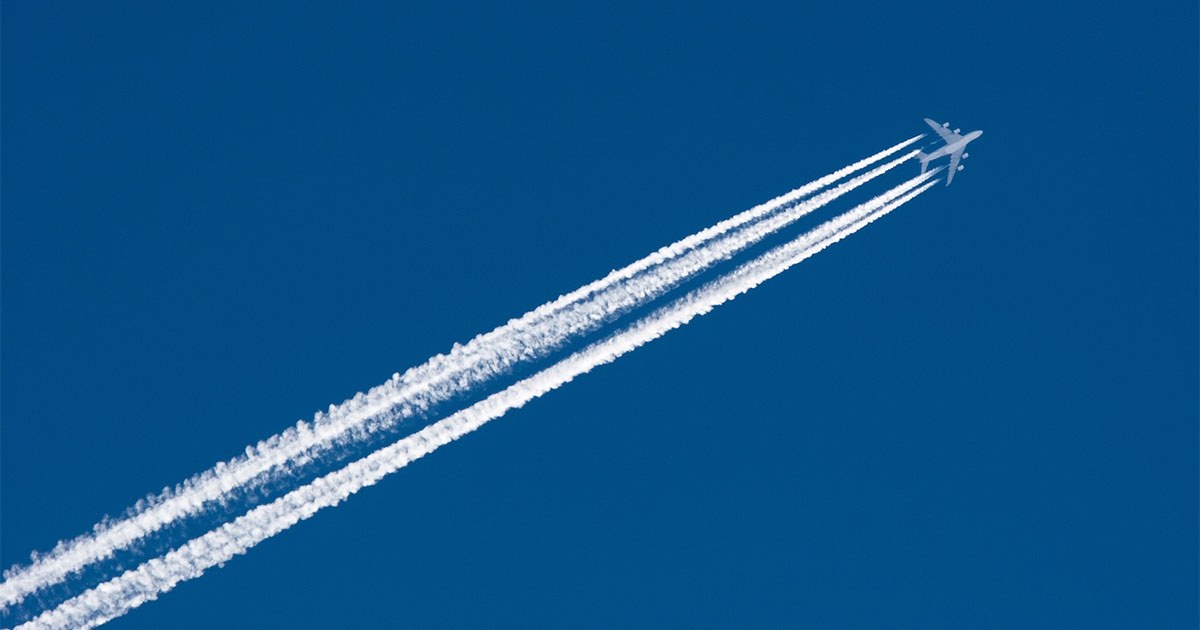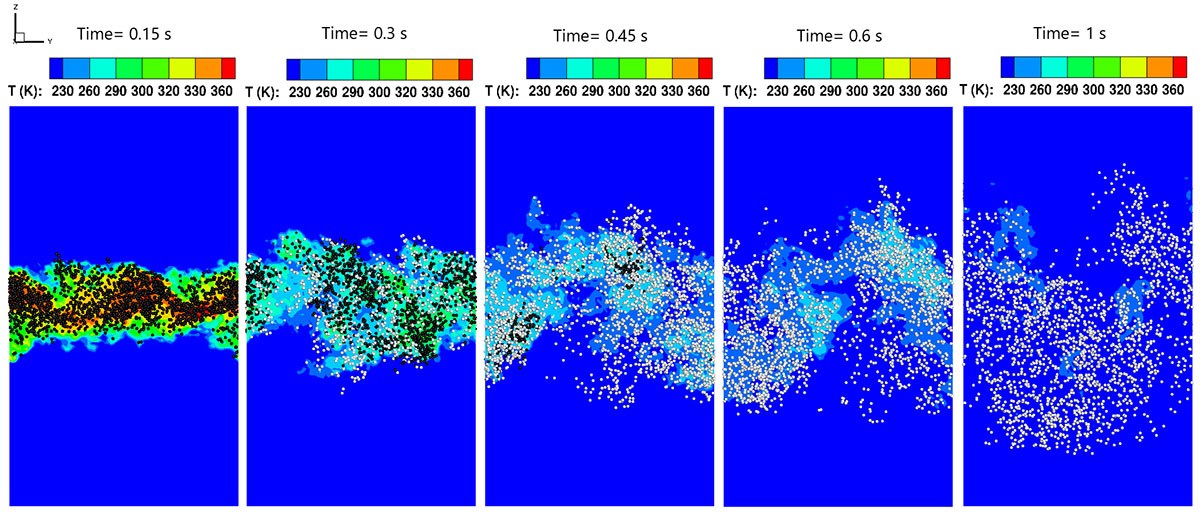
Summary
Contrails are ice clouds that form behind aircraft and contribute to global warming. This study investigates how bypass flow in turbofan engines affects early contrail formation. Using high-resolution computational fluid dynamics (CFD), it first compares a turbofan with an equivalent turbojet to isolate the role of the bypass stream. It then evaluates three advanced engines, CFM56-5B3/3, LEAP-1A/33, and an ultra-high bypass ratio (UHBR) design, under three ambient temperatures: 215, 220, and 225 K. Higher bypass ratios lead to stronger near field mixing and faster cooling, which increases soot activation and ice crystal formation. This makes the initial contrail less sensitive to ambient temperature.
Keywords: contrails, aircraft engines, engine near field, CFD, microphysics, bypass ratio, large eddy simulation.
Climate Impacts and Challenges Related to Contrails
Contrails are ice clouds that form from aircraft exhaust when very cold; moist air mixes with the plume. Tiny droplets first form from emission products, then freeze into ice crystals; if the surrounding air stays supersaturated with ice, contrails can persist and spread into broader cloud decks that last for hours and cover large areas. These clouds reflect and trap radiation, adding a warming effect to aviation’s footprint. Among the climate effects of aviation, the non-CO₂ portion is significant. Recent assessments estimate that non-CO₂ emissions account for about two thirds of the net warming impact from aviation, and aircraft-induced clouds, including persistent contrails and contrail cirrus, make up roughly 90% of this non-CO₂ share. These non-CO₂ terms are also the largest source of uncertainty.
Whether contrails form and last depends on both the atmosphere and the engine. Cold temperatures and high humidity are prerequisites for ice formation, but propulsion details matter too. More efficient engines with higher bypass ratios can shift the threshold so that contrails form at lower altitudes, where the air is relatively warmer, because they mix a larger amount of cooler bypass air with the exhaust gases. However, the first seconds after the exhaust leaves the nozzle are critical. The number and size of ice crystals set in the near field depend on exhaust conditions and tend to remain similar as the contrail evolves.
Studying this phenomenon with high-altitude flight experiments is difficult and costly. For this reason, numerical simulations are widely used to investigate the dynamic and microphysics that govern contrail formation and to help close remaining gaps in knowledge.
Contrail Formation Using Large Eddy Simulation
The exhaust jet was represented as a dual stream flow composed of a hotter core stream and a cooler bypass stream. The gas phase (air and water vapor) was solved using large-eddy simulation (LES) with the high-fidelity FludiLES code, while soot emissions from the core were tracked as discrete Lagrangian particles. An advanced microphysical scheme was used to describe the evolution of soot from activation to droplet formation and subsequent freezing into ice. The flow solver and microphysics were coupled online so that vapor depletion and latent-heat release fed back on the plume, improving model fidelity. Figure 1(a) illustrates the turbofan configuration with a bypass stream surrounding the core jet, and Figure 1(b) depicts the single-jet turbojet case.

Three representative turbofan engines were characterized by bypass ratios of 5.4 (CFM56-5B3/3), 10.5 (LEAP-1A/33), and 15 (UHBR). Simulations were carried out at cruise for ambient temperatures of 215, 220, and 225 K, with ice supersaturation ranging from about 100–140% across those cases. To isolate bypass effects, an average soot emission index of 4 × 10¹³ #/kg-fuel and an initial soot radius of 20 nm were used for all engines. A sensitivity test also examined 10¹³ and 10¹⁴ #/kg-fuel to frame the typical values. Large-eddy simulations were performed for 2 s of plume age in a temporal jet domain, using a well-resolved mesh (2 million) and a nondimensional time step of 0.02 (CFL < 0.6).
Impact of Bypass Flow and Ambient Conditions on Contrail Characteristics
In the first comparison, adding a bypass stream (the turbofan case) mixed and cooled the hot core exhaust more quickly than an equivalent single-jet engine without bypass (turbojet). This faster mixing led to larger early ice particles—the average particle size was up to about 30% bigger. In the second comparison, three real turbofans with different bypass ratios were tested. The high-bypass engine triggered particle activation and freezing more quickly and more completely, while the low-bypass engine did so more slowly. Cooler outside air made particles larger for all engines, but the high-bypass design was least affected by temperature changes. Quantitatively, by 0.3 s after the exhaust left the nozzle, the high-bypass engine had essentially all particles activated or freezing (near 100%), versus about 75% and 40% for the medium- and low-bypass engines. These findings apply to the early “jet” phase only. After roughly 0.6 s, differences between engines became small.
The model provides a foundation for advanced simulations that combine jet and vortex interactions with aerosol microphysics, enabling comprehensive assessment of contrail formation and evolution.

Conclusion
Higher bypass ratios in turbofan engines intensify near-field mixing and cooling, producing earlier and more complete soot activation with larger initial ice crystals, thereby reducing the sensitivity of nascent contrails to ambient temperature. These engine-dependent contrasts are largely confined to the jet stage.
Additional Information
For more information on this research, please read the following paper:



